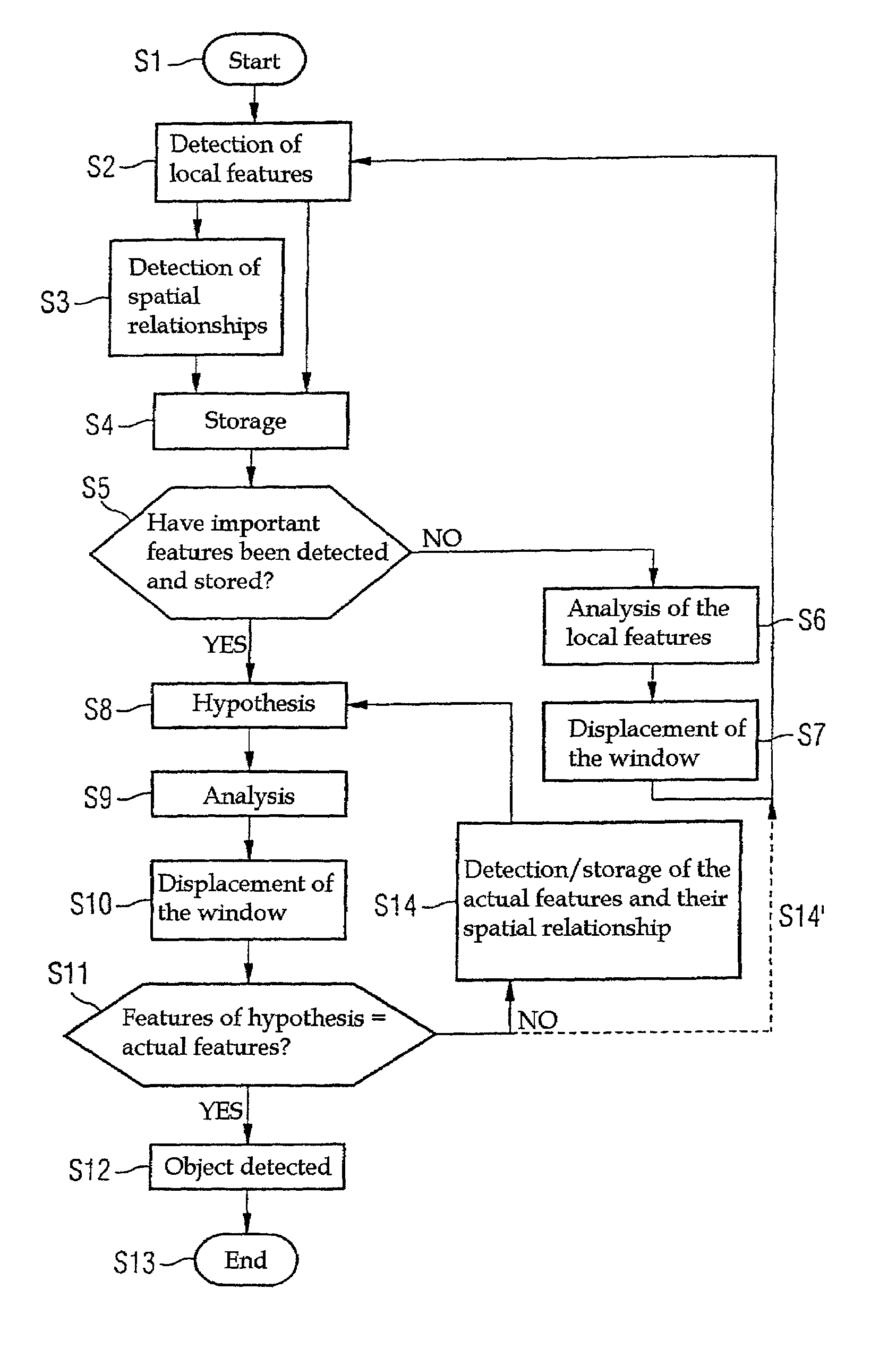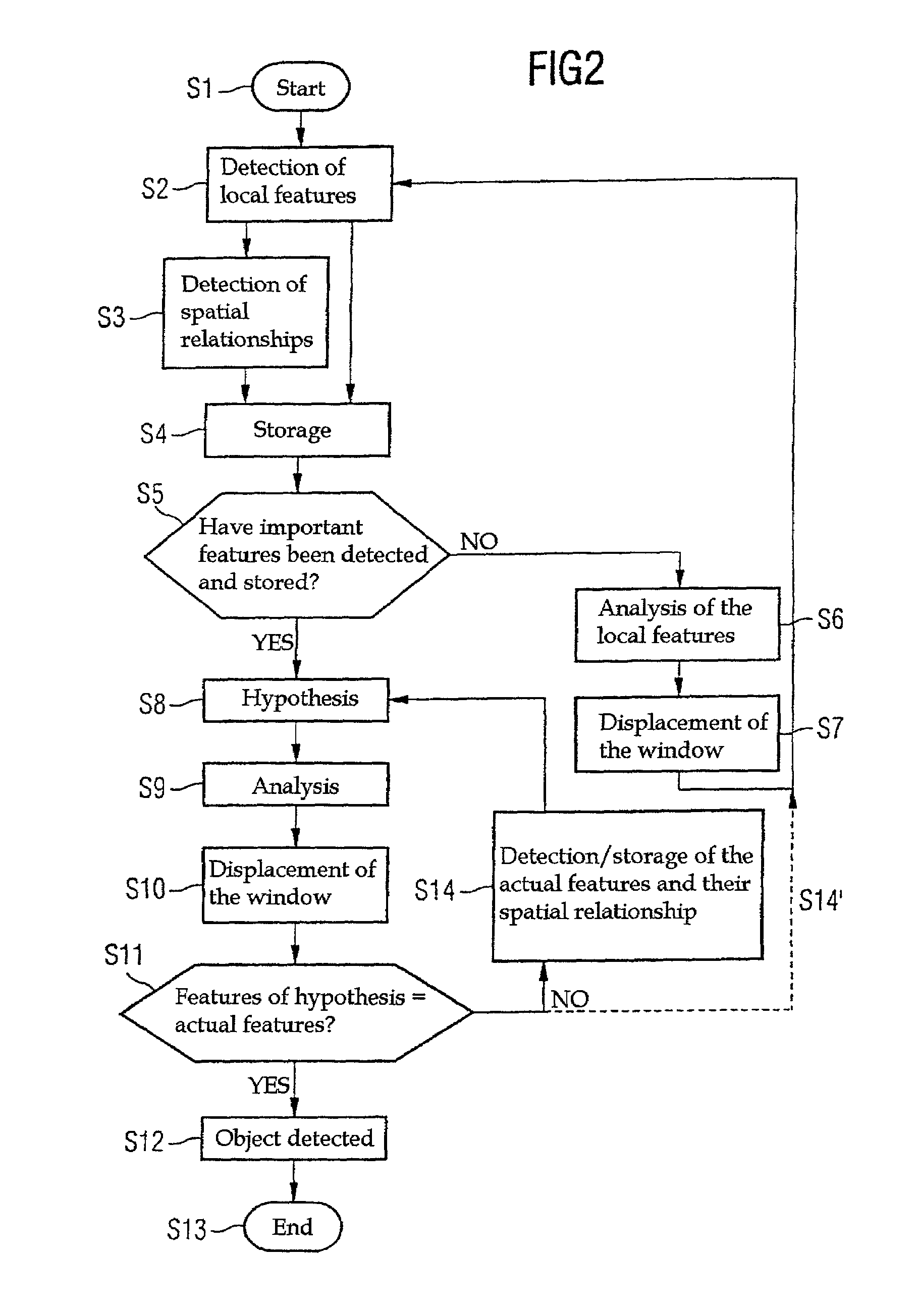Pattern recognition
a pattern recognition and pattern technology, applied in image analysis, instruments, computing, etc., can solve the problems of inadequate feed-forward approach and slow processing speed, and achieve the effect of less arithmetic capability and effective implementation
- Summary
- Abstract
- Description
- Claims
- Application Information
AI Technical Summary
Benefits of technology
Problems solved by technology
Method used
Image
Examples
Embodiment Construction
[0026]Reference will now be made in detail to the preferred embodiments of the present invention, examples of which are illustrated in the accompanying drawings, wherein like reference numerals refer to like elements throughout.
[0027]Referring to FIG. 1, the aim firstly is to explain the subassemblies of a system according to the invention for recognizing patterns. A flowchart which explains the controlled interaction of these subassemblies is therefore explained with reference to FIG. 2.
[0028]It may be mentioned that, in accordance with the exemplary embodiments, the recognition is performed visually, but that the invention can likewise be designed on the basis of other sensory perceptions such as, for example, acoustic perceptions.
[0029]In this case, the reference numeral denotes in FIG. 1 means for completely representing a pattern (object) to be recognized. These means can be, for example, a planar image sensor 9. The reference numeral 1 denotes in FIG. 1 means which can displac...
PUM
 Login to View More
Login to View More Abstract
Description
Claims
Application Information
 Login to View More
Login to View More - R&D
- Intellectual Property
- Life Sciences
- Materials
- Tech Scout
- Unparalleled Data Quality
- Higher Quality Content
- 60% Fewer Hallucinations
Browse by: Latest US Patents, China's latest patents, Technical Efficacy Thesaurus, Application Domain, Technology Topic, Popular Technical Reports.
© 2025 PatSnap. All rights reserved.Legal|Privacy policy|Modern Slavery Act Transparency Statement|Sitemap|About US| Contact US: help@patsnap.com



